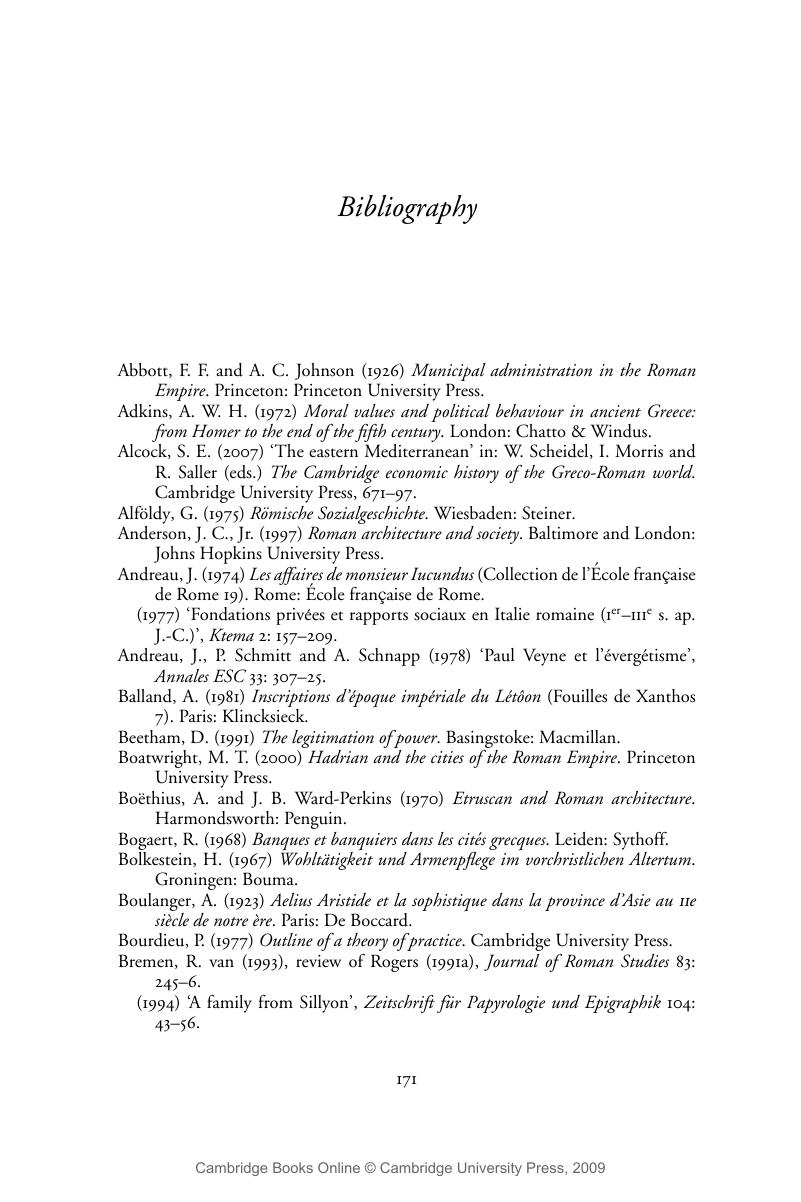Book contents
- Frontmatter
- Contents
- List of maps, tables and figures
- Acknowledgements
- List of abbreviations
- Roman Asia Minor
- Introduction
- 1 Introducing euergetism: questions, definitions and data
- 2 The size and nature of gifts
- 3 The icing on the cake?
- 4 The concentration of wealth and power
- 5 The politics of public generosity
- 6 Giving for a return: generosity and legitimation
- Epilogue: The decline of civic munificence
- Appendix 1 List of source references for the benefactions assembled in the database
- Appendix 2 Capital sums for foundations in the Roman east (c. i–iii ad)
- Appendix 3 Public buildings, distributions, and games and festivals per century (N = 399)
- Bibliography
- Index
- References
Bibliography
Published online by Cambridge University Press: 15 July 2009
- Frontmatter
- Contents
- List of maps, tables and figures
- Acknowledgements
- List of abbreviations
- Roman Asia Minor
- Introduction
- 1 Introducing euergetism: questions, definitions and data
- 2 The size and nature of gifts
- 3 The icing on the cake?
- 4 The concentration of wealth and power
- 5 The politics of public generosity
- 6 Giving for a return: generosity and legitimation
- Epilogue: The decline of civic munificence
- Appendix 1 List of source references for the benefactions assembled in the database
- Appendix 2 Capital sums for foundations in the Roman east (c. i–iii ad)
- Appendix 3 Public buildings, distributions, and games and festivals per century (N = 399)
- Bibliography
- Index
- References
Summary

- Type
- Chapter
- Information
- The Politics of Munificence in the Roman EmpireCitizens, Elites and Benefactors in Asia Minor, pp. 171 - 179Publisher: Cambridge University PressPrint publication year: 2009



